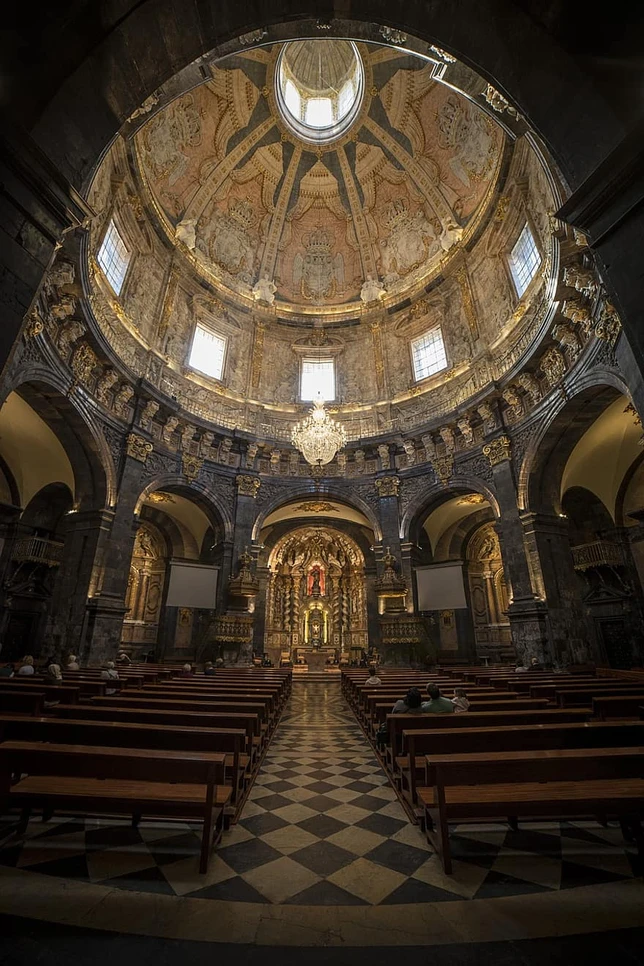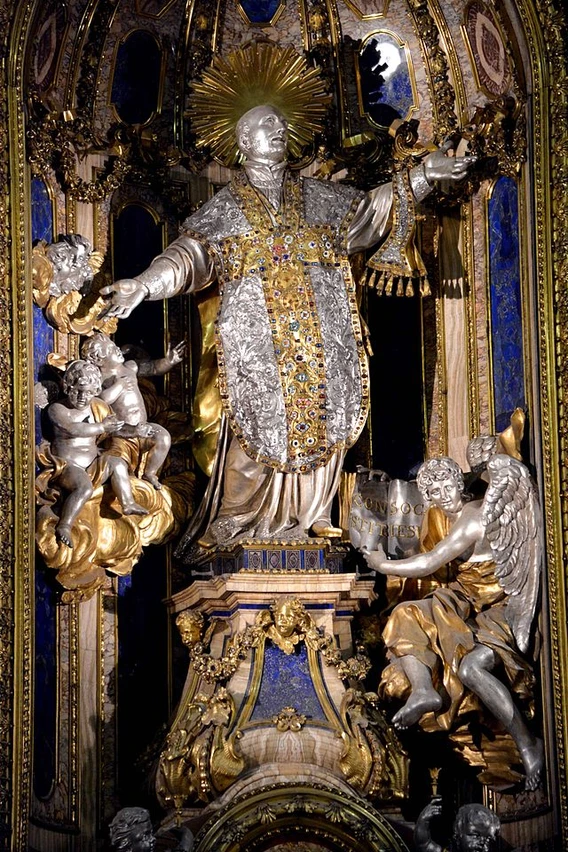We soon reached our destination in Spain's Basque Country - the emblematic Sanctuary of Loyola in the idyllic town of Azpeitia. It lies within the Urola Valley and along the scenic Urola River. The sanctuary was established as a major place of worship by the Jesuits because it is where their founder, Saint Ignatius of Loyola, was born.
The religious complex consists of the tower house of the Loyola family, which was the birthplace of Saint Ignatius, along with the grand basilica, a retreat house, a museum, a library, and a youth hostel. The sanctuary boasts of amazing architecture in the Churrigueresque Baroque style (characterized by elaborate surface decoration and marked by extreme, expressive and florid decorative detailing, normally found above the entrance on the main façade of a building), some interesting works of art, and hundreds of relics, which make it one of the main pilgrimage centres in Spain.
We first went to the basilica. It has an impressive 150-meter-long façade topped by a spectacular 65-meter-highdome.The whole structure is said to have been constructed by 600 masons out of large blocks of limestones quarried from Mount Izarraitz.
Inside, the dome is even more breathtaking, its dark blue and bright titian segmented pattern with white coats of arms reflects the design on the paved floor. At the base of the dome are symbols of the eight virtues of faith, hope, charity, religion, prudence, justice, fortitude, and temperance.
The main altar, like the church façade, was also done in the Churrigueresque style and decorated in marble and jasper. Atop is a silver sculpture of Saint Ignatius. Behind is a huge Romantic-era organ with three keyboards and a lot of pipes.
We were just in time for Sunday Mass. The church was filled with locals, so we sort of stood out from the crowd. We stayed in one section of the right wing.
The Mass was conducted in the Basque language, which I thought, was particularly interesting and memorable. There were two giant projector screens on each side of the altar that displayed the Mass responses and song lyrics, so I was able to participate in the recitation or prayers and singing of hymns, even though I did not understand a word. I know the parts of the Mass by heart anyhow, that is, in English and in my native language, so following it in Basque did not diminish the ceremony’s significance, and in fact, made it even truly special. Hearing this strange language first-hand (and it sounded a bit like Japanese to me), spoken in a religious ceremony by native-speakers, and being able to join them, at least in part, brought it alive in a very awe-inspiring way.
After the Mass, we visited the smaller chapels along the sides. There were six in total, dedicated to Saint Francis Borgia, Saint Francis Xavier, Saint Peter Claver, Saint Alphonse, as well as The Sacred Heart of Jesus, and Our Lady of Protection.
We smiled at the locals as they left. They came in big groups – families and extended families, and the community seemed to be the tightly-knit kind, transforming the back of the church to something akin to a family reunion. I couldn’t help but stare at them. The Basques are beautiful people - every single one of them, male and female, young and old alike. Their trademark blue eyes, aquiline nose, and prominent cheekbones are quite obvious, and they appeared reserved, yet warm. Though we were obviously visitors, they greeted us with smiles and friendly nods.
Photo Credits:
fr.hotels.com, personumericable.fr, freecountrymaps.com, viator.com, barcelo.com, pikist.com, wikiwand.com, touristpleasure.com, tierraignaciana.com, iaju.deusto.es, istockphoto.com, all-andorra.com






















































Comments